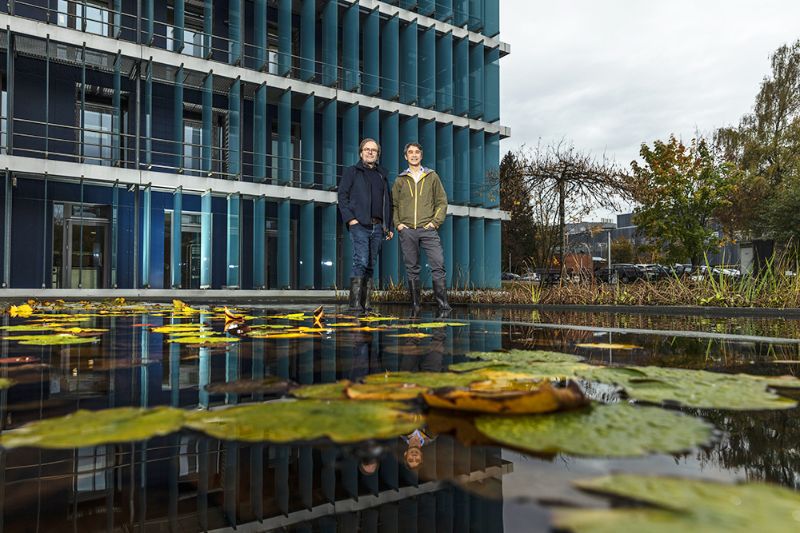The new gold standard?
Anyone with ambitions to challenge the “gold standard”, which has proved itself over decades, needs persuasive arguments. In urban water management, this gold standard involves wastewater from households and businesses being collected through the sewage system – since the 1960s usually in centralised treatment plants – where it is treated and released back into the environment. The advent of the sewage system made it possible for human beings to live together in urban agglomerations while maintaining sanitary living conditions in the long term. So, why change a system like that?
Professor Bernhard Truffer, group leader in the environmental social sciences research department at Eawag, is conducting research in innovation and industry dynamics in sustainable technologies. He has a convincing argument for change: on average, people produce one litre of urine each day – urine that contains large quantities of nitrogen and phosphorus. This litre of urine is then diluted with 150 litres of other household wastewater and conveyed via the sewage system for countless kilometres to a central treatment plant, where it is treated. “Basically, this is a very inefficient system,” he says. “Sewage networks are extensive and use a lot of water.” Instead, Professor Truffer proposes that in some cases a decentralised water treatment system could be used, and he advocates introducing a modular water infrastructure in Switzerland. “Decentralised systems use fewer pipes and less water if the reprocessing is carried out in a water circuit.”
It sounds obvious, and professor Max Maurer, group leader in the urban water management research department at Eawag, is convinced it will work. “Particularly since in the foreseeable future, new smart technologies will make it possible to develop fully functional and cost-effective modular water treatment systems.”
The problem lies mainly in the lack of imagination shown by the water treatment experts, who are content to rest on their laurels with the centralised system. It is they who are currently making the water infrastructure investment decisions that will endure for the lifetime of future treatment systems, which can be as long as 80 years. This will, in theory at least, lead to a risk of misallocating financial resources if they do not react in time to the technological innovations that suggest that modular, decentralised wastewater systems are the way to go.
To encourage the knowledge transfer required to put into practice the future possibilities of modular wastewater systems, as part of the Swiss National Research Programme NRP 73, Truffer and Maurer are heading up the Comix project – Challenges and Opportunities of Modular Water Infrastructures for Greening the Swiss Economy.
This is an interdisciplinary project involving institutions of the ETH Domain, which for years have held claim to globally recognised expertise in all water management issues. As a result, the Comix project also incorporates scientists from ETH Zurich, the Swiss consultancy firm Ecoplan and urban water management decision-makers in Switzerland at all levels of national and local government, along with industry organisations. The issue is a significant one: can and should the current almost exclusively centralised water infrastructures be switched to a modular hybrid system in the future?
This question was discussed in workshops involving all the participants. “Initially, people mainly came up with obstacles,” says Truffer, “largely preventing the introduction of decentralised wastewater systems in Switzerland or giving the impression that they were a realistic option only in outlying areas.”
Switzerland’s future with a hybrid wastewater system
However, the more the end-to-end view gained ground, the stronger the impetus behind a change of heart began to build. Decentralised systems can be a good option even in urban areas, provided that innovative architecture is used to enable integrated approaches that combine the water and energy infrastructures – to provide city-centre cooling systems, for example, or if water management can be geared toward an autonomous circular economy when constructing new buildings on brownfield sites. “If we do that,” say Truffer and Maurer, “in the long term, the proportion of decentralised wastewater treatment can be increased from the current 2.5% to 50%.” They believe that Switzerland’s future will involve a hybrid wastewater system of this kind and that at least some of the current new investment should already be heading that way.
